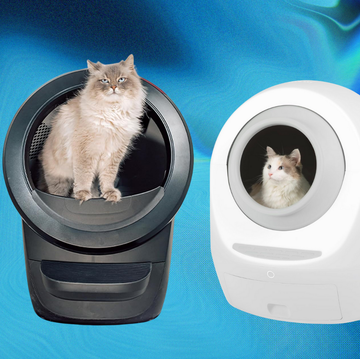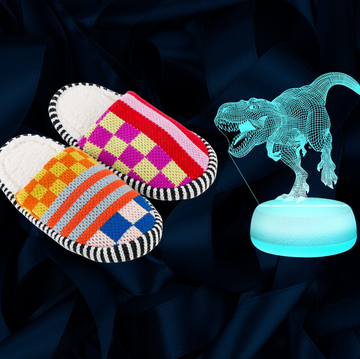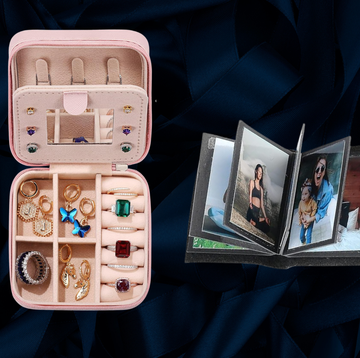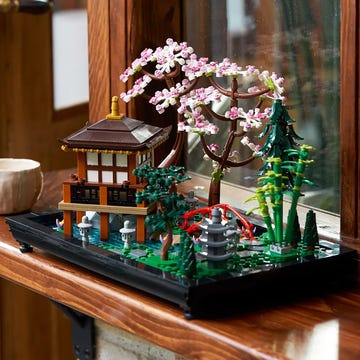It's Climate Week in NYC, and Stanley just launched a take-back program for its stainless steel products. The brand's new program allows you to recycle your damaged or worn-out Stanley insulated tumblers, water bottles, and more—all through its website.
I've been an analyst in the Good Housekeeping Institute Kitchen Appliances and Innovation Lab for over three years, and I've tested more than a hundred water bottles, tumblers, and travel mugs—including numerous from Stanley.
I put each piece of drinkware through extensive testing, including drop tests. I use a drop‑tester machine to drop each item from three feet, three times. Trust me: Most stainless steel pieces—including those from Stanley—will dent, scratch, or otherwise show damage when dropped repeatedly. In short, wear and tear happens even with careful users, and you don't need to clear a pricey tumbler out of your cabinets just because it's dinged up. But sometimes it's time to say goodbye.
I developed a strong foundation in sustainability as a student at NYU, where I earned a B.S. in Food Studies. When word of Stanley's program came across my desk, I was excited. Most stainless steel drinkware isn't accepted by most curbside recycling programs, so Stanley’s new take-back program is a smart solution: It helps Stanley fans declutter, and it helps reduce waste headed for the landfill.
How does the Stanley take-back program work?
According to the brand, these are the details:
- Submit up to four eligible Stanley products annually at stanley1913.com.
- The website will generate a prepaid shipping label or QR code (depending on your preference).
- Ship your eligible items at no cost. They will be sent to a U.S.-based recycling partner, where they are disassembled, sorted, and recycled.
- You will receive a $5 discount code for use on the Stanley website.
- Stanley will donate $5 to Ocean Conservancy for each eligible item returned.
What are the pros and cons of this program?
✔️ Pros:
- You're able to recycle your worn or damaged Stanley products and declutter your cabinets.
- Each product you send through the website earns you a $5 discount off your next purchase from the Stanley website.
- For each product you donate, Stanley will donate $5 in your name to Ocean Conservancy.
- According to Stanley, in 2024, 65 percent of materials used in Stanley products were recycled content, which means the products you send might have a new life as a new Stanley product.
✔️ Cons:
- You can submit only up to four products a year.
- Products can be from Stanley only (no other manufacturers).
- The company will accept only products you submit via the website, and they must qualify for the program. If you send other products that don't qualify, you will not receive them back.
- The $5 credit is good only on Stanley's website, not for Stanley products sold through other means.
Is Stanley the first company to launch a program like this?
No, Stanley isn’t the first brand to launch a recycling program for reusable water bottles, and I applaud every company that does. The fewer items we send to landfills, the better. These drinkware manufacturers offer similar programs:
- Trade-In by Hydroflask: Customers must register their product, print a shipping label, and mail the item within 30 days. Once Hydro Flask receives and recycles the bottle, customers get $5 toward their next purchase.
- Thermos Recycling Program: This recycling program lets you send in Thermos Brand stainless steel items with a free UPS label. You get a $5 thermos.com coupon per qualifying item, up to five per household per year.
- Hydrapak Repak: This is a drop-off upcycling program for squeezable LDPE and PP sports bottles from any brand (including Polar Bottle, Specialized, CamelBak, Nathan, Gatorade, and more). Drop your bottles at RePak boxes at participating retailers.
Recycled your Stanley? Here's what to buy with the $5 credit:
Eva (she/her) is a reviews analyst in the Kitchen Appliances and Innovation Lab, where she tests kitchen gear, home appliances and culinary innovations. She graduated from NYU with a bachelor of science in food studies, nutrition and public health and is a trained chef through the Natural Gourmet Institute. Eva has more than 10 years of experience in the food industry, working as a food stylist, personal chef and marketing manager.

















